9 nostalgic plants your grandparents loved to grow and nurture – and why you should grow them too
Growing nostalgic plants of yesteryear can boost well-being and bring beauty into back your yard


There’s something hugely comforting and familiar about raising and caring for the same garden blooms as your grandparents. Revisiting the charms of a childhood memory, the sight and scent of flowers such as sweet peas, sweet williams, carnations and peonies can instantly transport you back to happy, heady days spent with loved ones in the garden.
As gardening trends come and go, many plant varieties quietly fall out of favor, leading us to often overlook those garden treasures that are easy to grow, hold so many memories and – above all – are simply knockout in the container, basket or border.
Call us sentimental, but here we delve into our favorite blooms of yesteryear, perfect for creating a nostalgia garden. Taking time to rediscover their individual charms will help us take a fresh look at what they can bring to our gardens today.
9 nostalgic plants your grandparents used to grow
Unashamedly blowsy, fragrant and full of charm, we think these old-time treasured varieties are set for a comeback.
London Pride
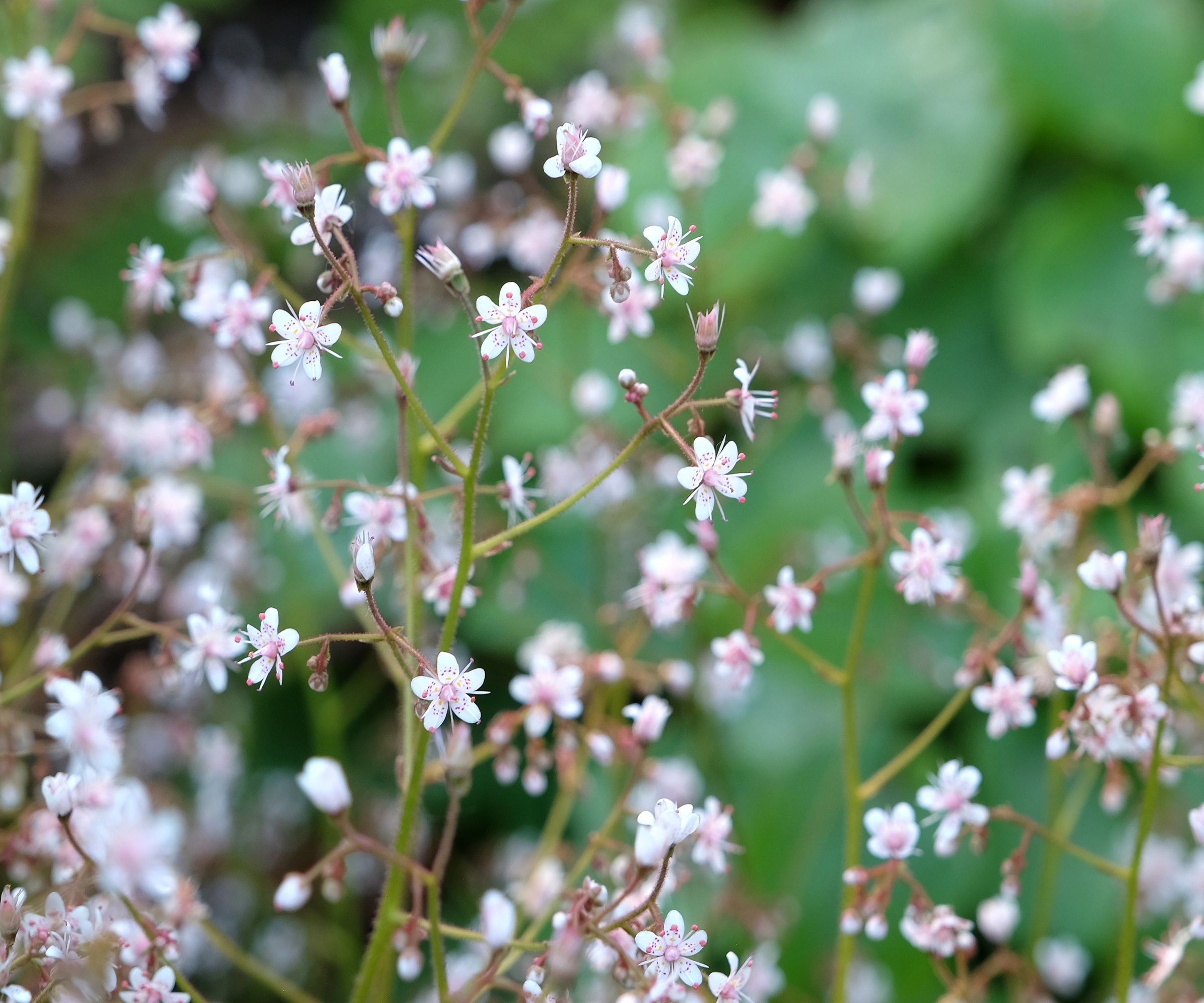
London Pride, or Saxifraga × urbium, is a drought, shade loving plant that takes me right back to childhood. A carpet of vibrant green rosettes that sends up wiry stems, topped with a froth of tiny pink and white blooms, it is an unusual yet heavenly sight.
Flowers appear every spring and summer from May to July and they are magnets for bees and butterflies seeking out the rich nectar and pollen.
An easy going perennial, this plant with its spoon shaped leaves loves nothing more than being left alone to colonize shady spots, taking over gaps in paving and cracks in walls.
Design expertise in your inbox – from inspiring decorating ideas and beautiful celebrity homes to practical gardening advice and shopping round-ups.
Perfect for blurring the edges between planting and hard landscaping, there’s something about its beauty and resilience that never fails to impress.
Reaching heights of 10 inches (25cm) it will thrive in USDA zones 6-8. Keep it looking good by snipping off the spent flower stems. Long nosed garden snips such as these from Walmart will make easy work of this task.
Peony

A great option for cottage gardens, peonies are floriferous and highly perfumed blooms that appear fleetingly late May – early June. Thriving in USDA Hardiness zones 2-8, these long-lived beauties can survive for up to 100 years and spread to cover 3ft (90cm).
‘I had one grandmother that loved peonies,’ says Katie Sunderlage. ‘She had a whole row of Sarah Bernhardt peonies that lined the entire southside of her house. It looked stunning in full bloom. I remember as kids, my cousins and I would look forward to when they would bloom in spring. She would often cut one for us to take home.’
A classic variety and firm part of the Regencycore garden trend, peonies can be planted as a pre-potted established plant or as a bare root. If planting as a bare root, it can take 2-3 years to blooms so patience is definitely needed.
Planting during the colder temperatures of either fall or spring works best along with a sunny spot and well-drained soil.
‘One thing to remember, especially with some of the older, more traditional varieties, air flow is key,’ explains Katie. ‘There needs to be enough space between plants to help eliminate powdery mildew.’
Peonies are brilliant for cut flower gardens or just as a focal point in a spring garden bed, but it's well worth taking time to stake emerging growth with simple half-round hoops such as these from Walmart and knowing when to cut back peonies to avoid a disappointing show the following year.
Sweet Williams

Slow growing but absolutely worth it, sweet william or Dianthus barbatus dazzles with its mass of fringed edged flowers in candy shades of white, pink, cerise and claret.
Set against dark green lanceolate foliage, these cottage garden beauties are a real old time favorite, with older varieties having a distinctive sweet fragrance.
Appearing continually from June to August, these long-lasting blooms remain vibrant for up to ten days, filling sunny pots and borders with cheer. They are also fantastic cut flowers to bring into the home.
Sweet williams can be bought as annual plug plants but raising them from seed means you can enjoy more unusual varieties, including ‘Bodestolz’ with its painterly mix of pink, red and burgundy part patterned flowerheads.; ‘Sooty’ with deep black-red flowers and the magical white blooms of ‘Jolt Pink Magic’ that gradually turn deep shades of pink.
Best suited to USDA zones 3a-9, these plants require a rich but well drained soil in a sunny spot. Keep soil moist using a wood mulch such as this from Amazon, but avoid saturation. Plant height varies widely from 12-24 inches (30cm-60cm) depending on variety.
Holly
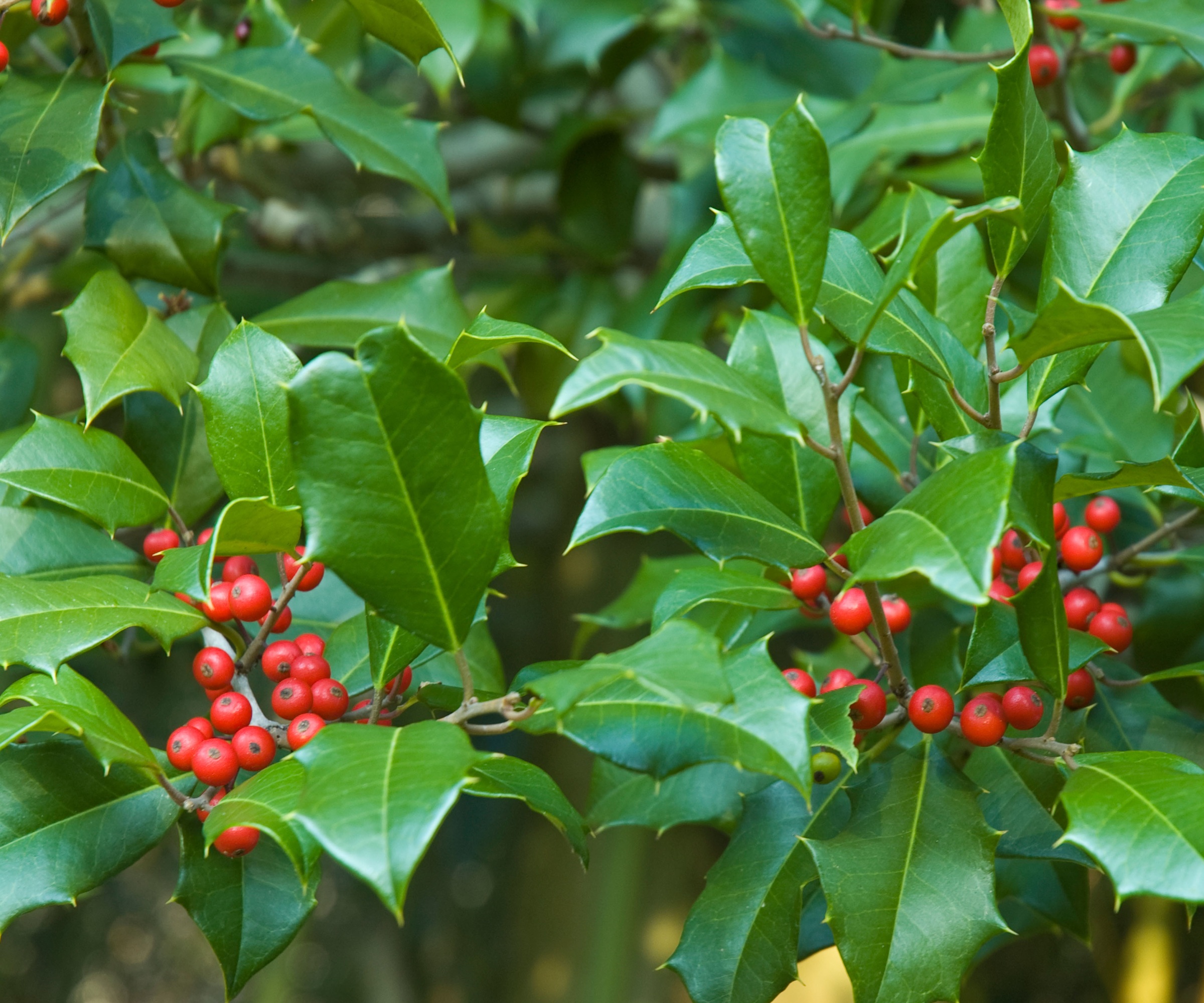
A shrub that's often overlooked but is delightfully decorative and robust, holly, Ilex aquifolium, is somewhat out of favor in yards today. Apart from winter holiday season, we seldom consider growing these tough, evergreen shrubs but they were once highly treasured for their glossy leaves and vibrant berries.
‘My grandfather was an avid gardener, but definitely not a designer! His little beach bungalow was surrounded by mostly Delaware River stone, but he planted two Ilex opaca hollies in front of their sitting porch, like two little strangers with no friends. The hollies were but small shrubs when he put them in and they persist to this day, in tall, (comically) conical shapes in front of the bungalow,’ says landscape designer Stacilyn Feldman.
‘Revisiting these plants today, I’d prefer to see the Ilex in a border, rather than individual beds, with consideration for the anticipated height so they wouldn’t block the views.
'And never forget, hollies will shed leaves and those leaves will prick! I always recommend planting hollies in larger planting beds, where a sublayer can absorb the fallen leaves and keep them away from walking paths, if possible.’

Stacilyn Feldman is a Principal at Oehme, van Sweden in Washington, DC. She has designed, managed, and shepherded over a decade’s worth of the firm’s landmark projects including green roofs, urban development, botanic gardens, and residential estates. Stacilyn holds a Bachelors of Landscape Architecture from The Pennsylvania State University.
Lilac
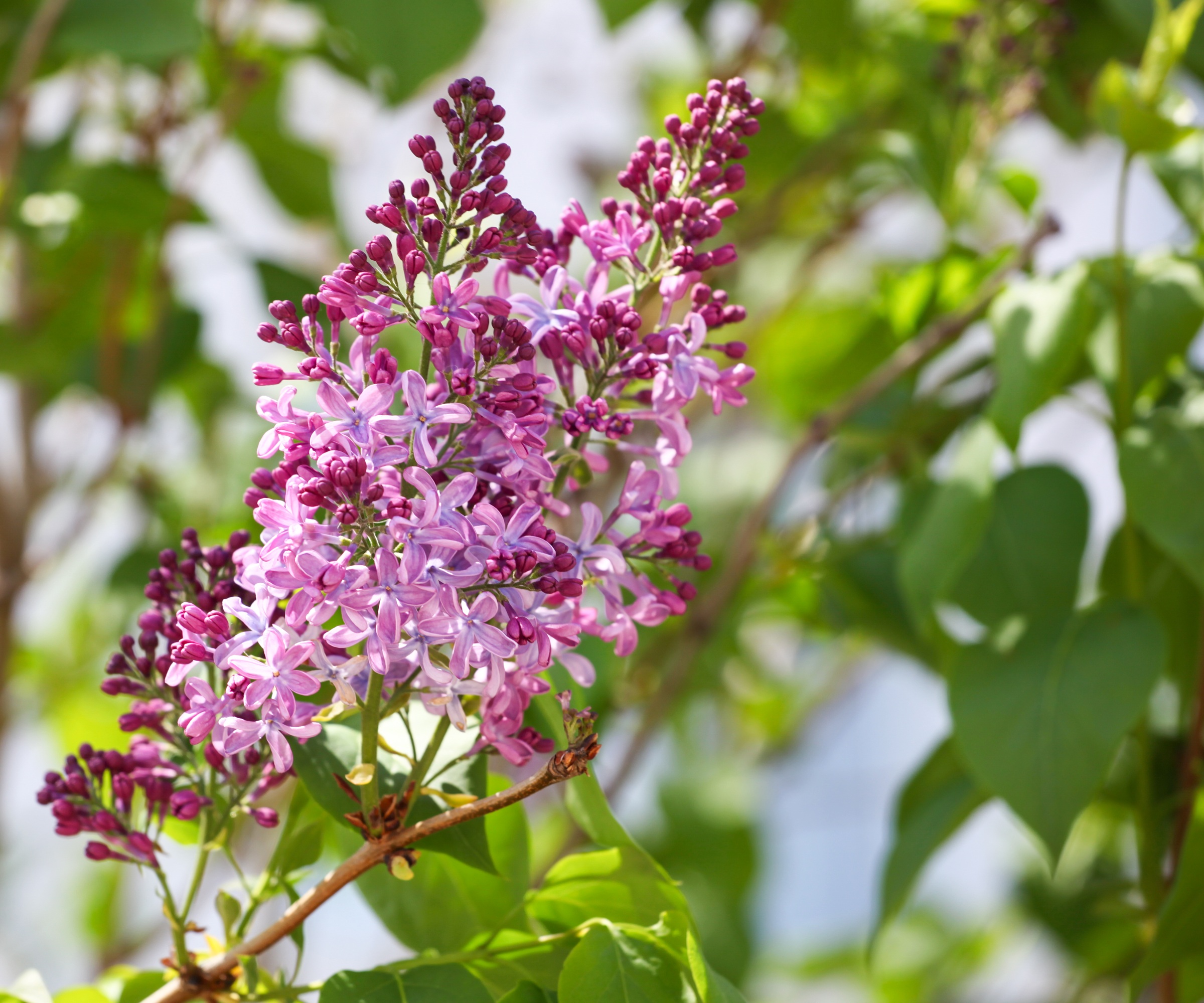
Smothered in deliciously fragrant blooms every spring, these elegant deciduous shrubs, with their heart-shaped leaves, were hugely popular lining yards just a generation or two ago.
Their conical floral spires in shades of purest white through mauve to deep violet, dazzling passersby and attracting bees, butterflies, moths and hummingbirds. Thriving in USDA zones 3a-7a, common lilac, syringa vulgaris, reaches a height of 14-26ft (4-8m), and the same distance wide.
‘My Grandfather had a lilac that never bloomed,’ continues Stacilyn. ‘I admire his dedication to caring for it, season after season, but he never tried to change the conditions to encourage blooms.
'If he had moved it to a sunnier location or delt with the perennial mold issues (another problem with being near the beach), he might have had better luck.’
When thinking about using lilac today, Stacilyn is quick to say that they shouldn’t stand alone. ‘Lilacs lose their lower leaves easily and they need a companion plant. Peonies or astilbe provide great foils in color and texture.’
Lily of the Valley
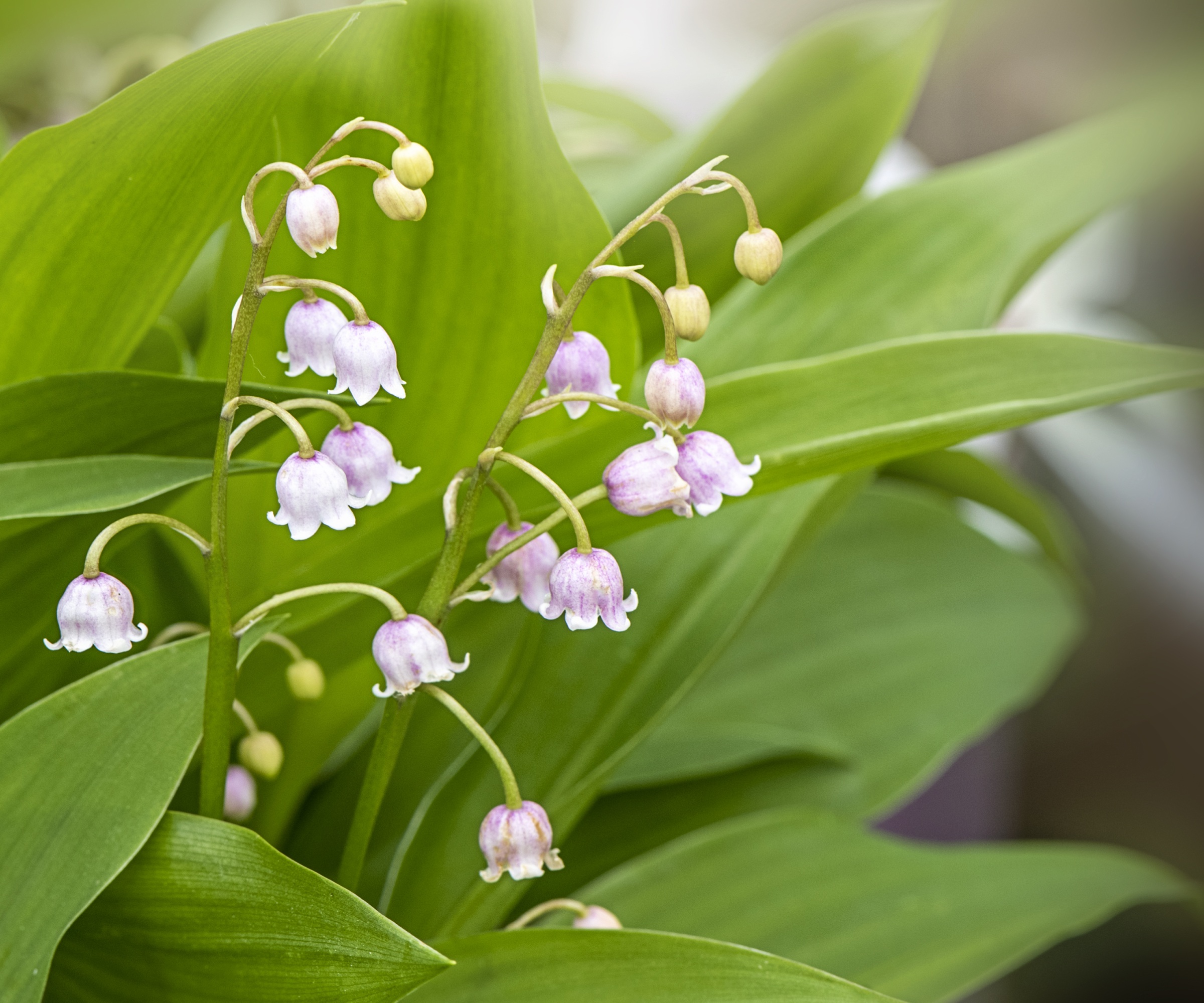
‘For me personally, lily of the valley, Convallaria majalis, is one of the most nostalgic flowers in my garden,’ says Master Gardener and High Country Gardens representative Tabar Gifford.
‘It was a favorite of both of my grandmothers, and I now grow divisions passed down through my aunt, who lovingly dug them up from the garden of her childhood home. Every spring, when the delicate white bell-shaped flowers bloom and fill the air with their signature sweet fragrance, I’m immediately transported to childhood evenings in New Hampshire.
'My brother and I would play by the pond, breathing in the scent of lilacs, peonies, and Lily of the Valley, as bullfrogs sang and we argued over who got to sleep in the hammock that night. The flowers evoke such vivid memories. They aren’t just plants to me, but reminders of the people and places that helped shape who I am.’
From a gardening perspective, lily of the valley is an excellent choice for shaded gardens and woodland borders, as Tabar explains. ‘It thrives in rich, moist soil and spreads over time to form a dense carpet of foliage and flowers.
'While it’s a low-maintenance perennial once established, it’s important to give it room to roam. Or plant it in a contained area if you’re working in a smaller garden, since it can spread vigorously.’
This shade loving beauty will thrive in USDA hardiness zones 3a to 8b and only reaches 10 inches (25cm) in height.
Bearded Iris

A timeless classic that carries deep sentimental value for many is the bearded Iris. ‘Part of what makes this plant so special is how naturally they lend themselves to sharing; they thrive on division, making them perfect for passing down through generations,’ says Tabar.
‘Growing up, my aunt would often arrive with carefully wrapped bundles of iris rhizomes, and we’d spend hours planting together and catching up; an experience as much about connection as it was about gardening.'
Bearded irises are resilient and elegant, with bold blooms and upright, sword-like foliage that adds structure long after the flowers fade. They do best in full sun and well-drained soil, and a simple division every few years keeps them blooming at their best.
For those looking to grow bearded irises successfully, a few tips are essential. These plants prefer full sun and well-drained soil to flourish, and they benefit from being divided every few years to maintain their vigor.
When planting, be sure to choose a spot with plenty of sunlight and amend the soil with sand or grit to enhance drainage; this helps prevent crown rot, a common issue with irises.
With proper care, bearded irises reward you with a spectacular display of color in early summer, making them a perfect plant for both new gardeners and seasoned horticulturists who appreciate their timeless elegance.

As the Partnership Cultivator at American Meadows and High Country Gardens, Tabar Gifford, a Master Gardener, and dedicated “plant geek,” passionately fosters connections. With a lifelong love for gardening and nature, and a background in environmental studies and sustainable community development, she combines horticultural expertise with a commitment to education. Striving to empower individuals in achieving their gardening aspirations, Tabar embodies a genuine passion for sharing her knowledge. She gardens in zone 4 in Vermont.

Operations Manager at Holland Group, managing the customer service department and purchasing. Katie has been in the green industry since 2005 in the Greater Milwaukee area, earning her degree in Horticulture in 2008. She has been able to share her love for plants working in multiple garden centers, in sales positions and most recently in an online retail platform at Holland Group.
Antirrhinum
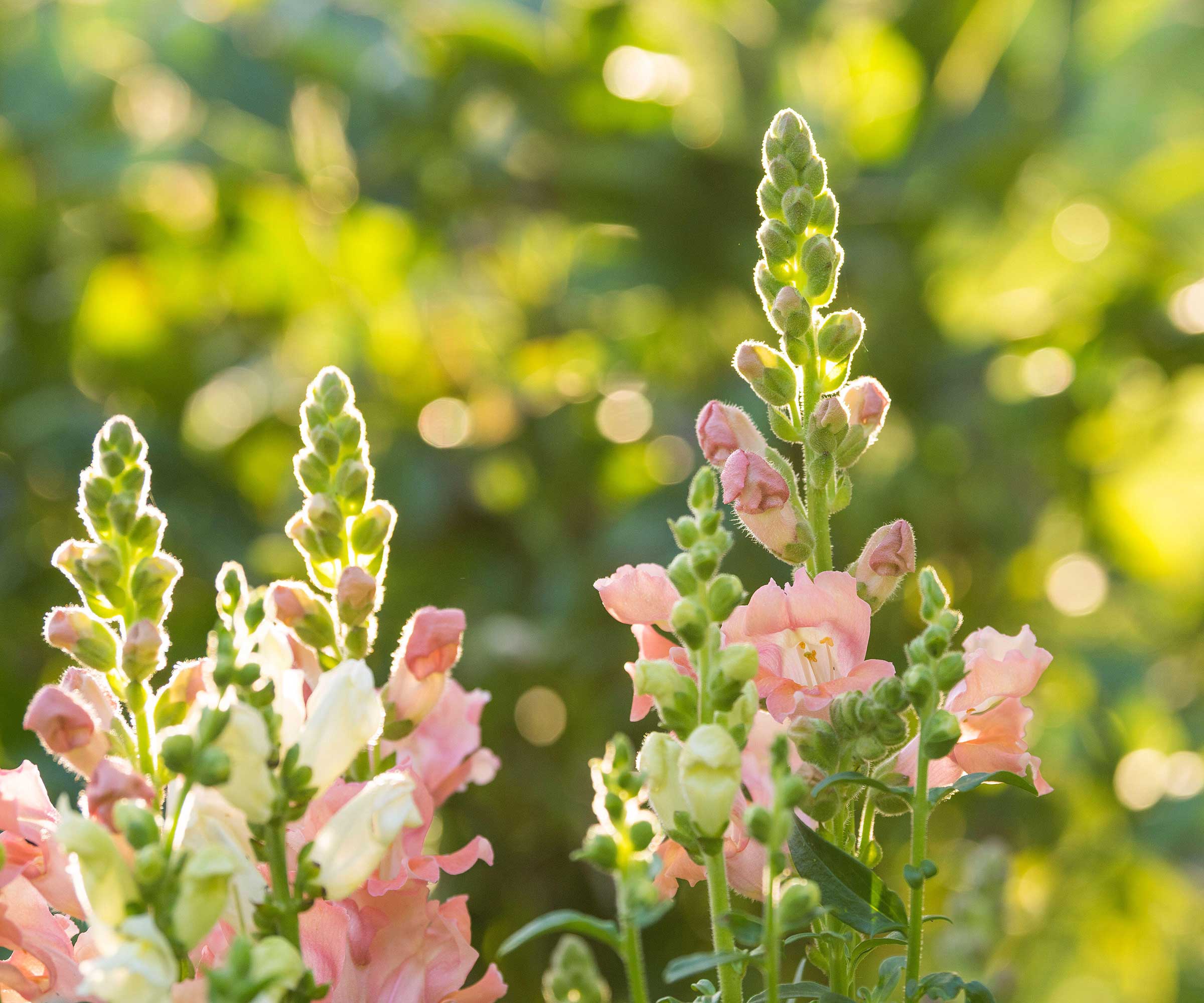
Antirrhinums have mesmerized children and gardeners alike for generations, with their vibrant flower spires and distinctive blooms that open and close when you squeeze their base. There’s something about the sight of these summer flowering favorites that evoke childhood memories and simple pleasures.
‘The one nostalgic plant that comes to mind for me is the Snapdragon,’ says Laura Walsh, Director of Marketing, Oasis Forage Products. ‘My grandmother would save the seeds from the prior year and germinate the next season. She liked them because they would look strong, tall and important. I liked snapdragons because you could make that cool “chomping” with the petals.’
With many enchanting varieties to choose from, including the soft, subtle charms of ‘Appleblossom’, seeds available from Burpee, to the deep moody claret and red spires of ‘Cherry Cola’, they are guaranteed to turn heads in your yard.
One of the best flowers to sow in August, ‘They make awesome line material and with a pop of color that brightens any landscape,’ Laura continues. ‘Plus they are great foraging material to cut and bring inside for floral creations.’
Snapdragons thrive in cool weather, so choose a spot with full sun and well-draining soil, and plant out in early spring or fall for best results.
Deadhead spent blooms regularly to encourage continuous flowering and for bushier growth, pinch back the tips when plants are young. Suited to USDA zones 7-10, varieties can reach up to 25 inches (65cm).
Hollyhocks
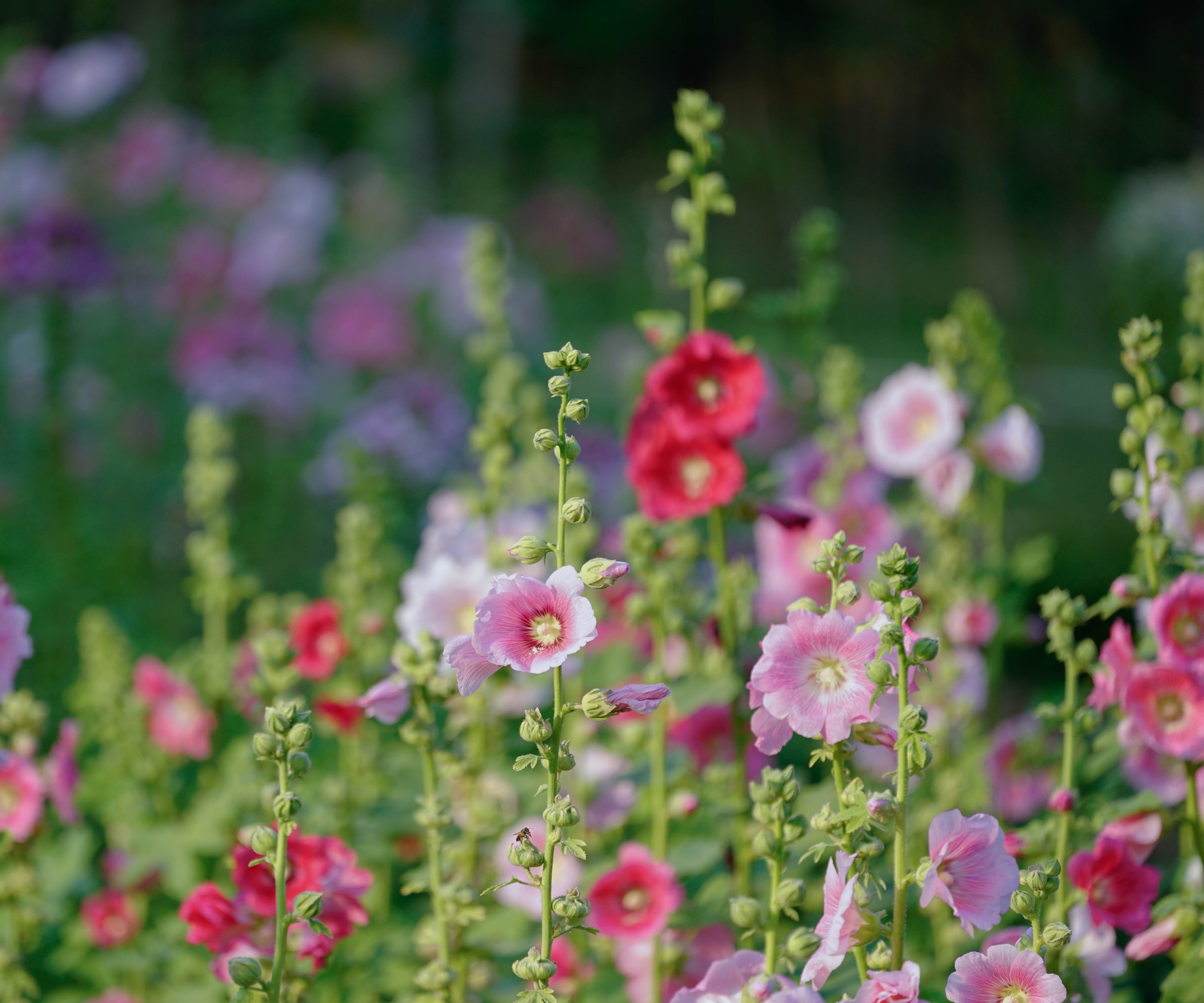
Soaring to heights of 8.2ft (2.5m) hollyhock or Alcea rosea is a true cottage garden beauty that never fails to impress with its elegance and large, open blooms. With flowers opening in succession from the base of the flower spike to the tip, they provide color for weeks on end, throughout mid summer.
Prolific self-seeders, they have the delightful habit of popping up unexpectedly in paving cracks and borders, adding to their majestic charm.
‘My grandmother would save the seeds from the prior year and germinate the next season,’ says Laura Walsh. ‘She liked them because they would look strong, tall and important.’
Hollyhocks grow in USDA zones 3-9, preferring full sun and rich, well-drained soil. They benefit from being planted near a wall or fence for wind protection and support and need little care.
Laura recommends to, ‘Start them from seed in late summer or early fall for blooms the following year. Keep soil consistently moist and remove spent flowers to prolong blooming and reduce self-seeding.’ This Romantic seed mix from Burpee will provide plenty of colorful, old fashioned blooms.
There are many old fashioned blooms that deserve a place in your yard, including these sumptuous sweet pea varieties and the very best climbing roses for some perfumed, vintage charm. For further inspiration peruse through these cottage garden ideas.

Journalist Jill Morgan has spent over 20 years writing and editing gardening, interior and property features. Titles she has worked on include The English Home, House Beautiful, Ideal Home, Houzz and Modern Gardens and she writes regularly for H&G as a Contributing Editor. Whilst she is a dab hand at renovation projects and DIY, she is happiest when out digging in the garden or planning a new border.
You must confirm your public display name before commenting
Please logout and then login again, you will then be prompted to enter your display name.